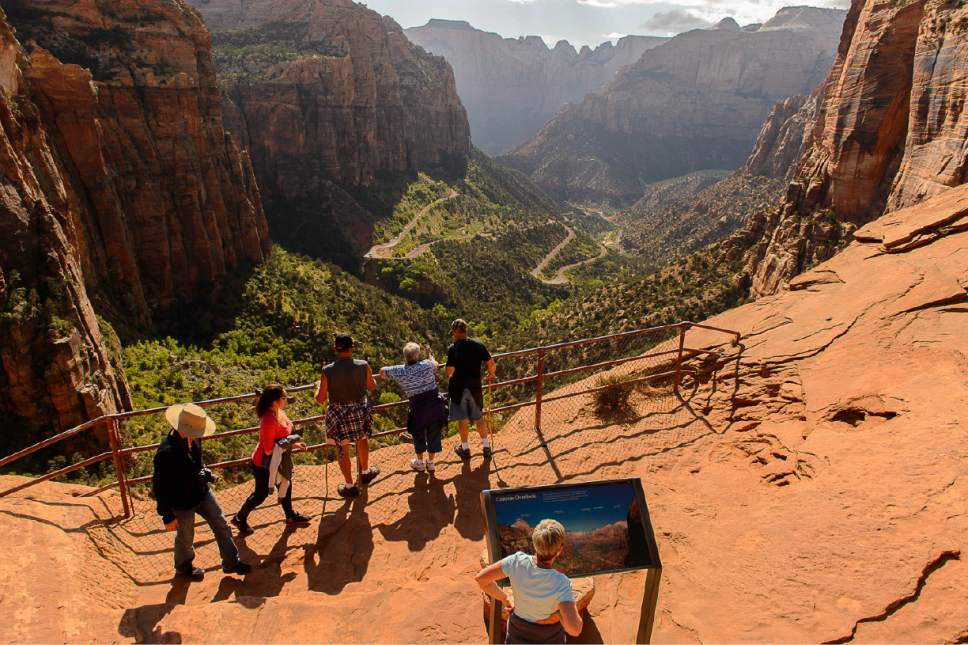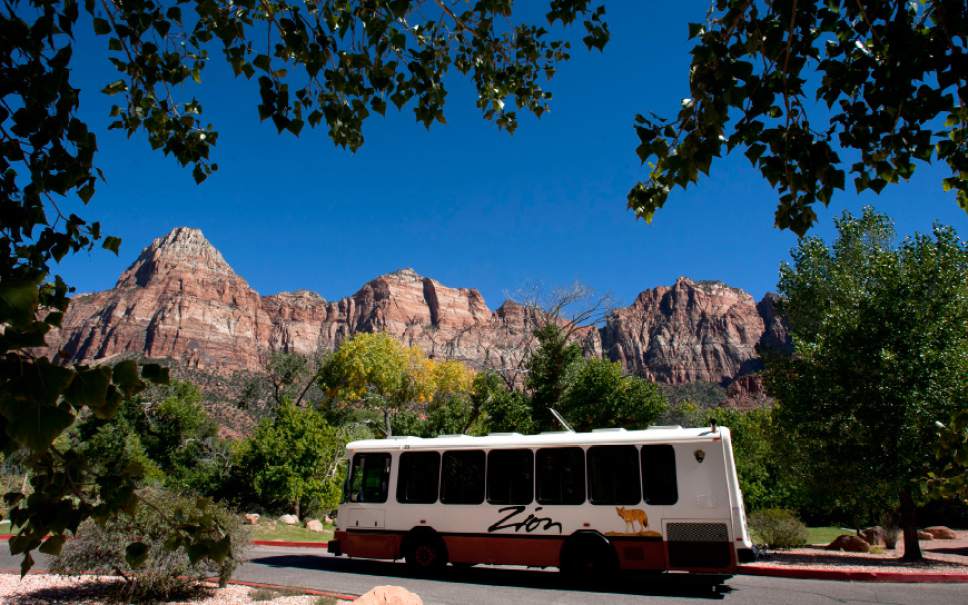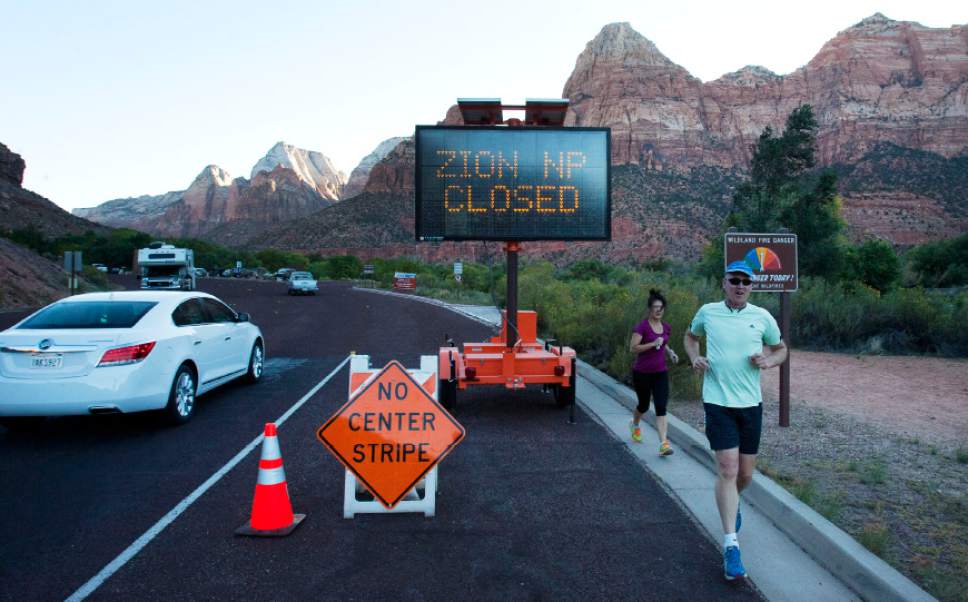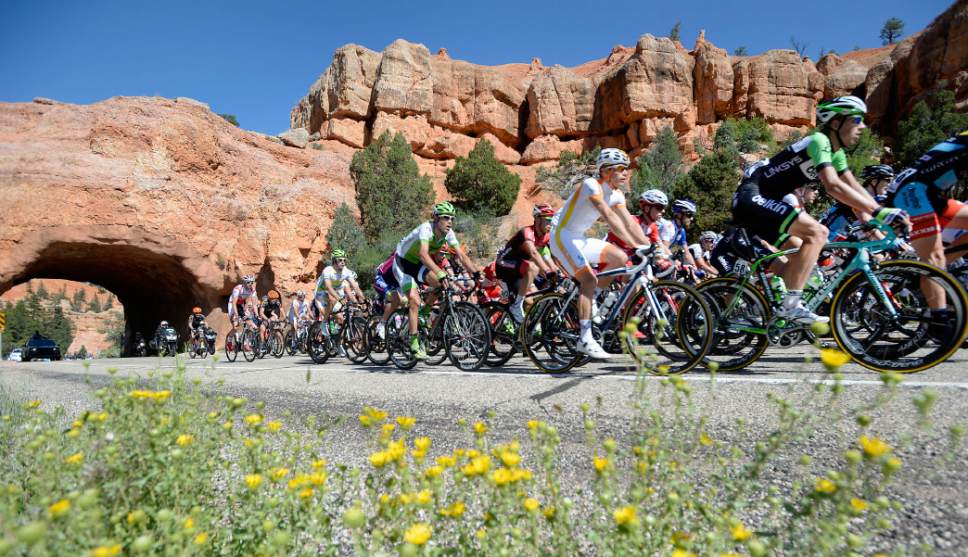This is an archived article that was published on sltrib.com in 2016, and information in the article may be outdated. It is provided only for personal research purposes and may not be reprinted.
The first dozen miles of this year's Tour of Utah, the nation's premier multistage bicycle race, are expected to pass through Zion National Park, which is already experiencing crushing crowds that spill into the gateway town of Springdale.
That plan, which has yet to be officially confirmed by the National Park Service but has been described by Utah Rep. Chris Stewart, is not sitting well with many local residents who feel Zion, which saw a record 3.5 million visitors last year, already has too much international exposure. And conservationists fear the service is setting a dangerous precedent by allowing a commercial event that appears to defy park management policies.
"We aren't opposed to bikes. It's really about time, place and manner. At Zion, it doesn't make sense at the peak of visitor season, which lasts nine months, that you would close the park even for a short period of time," said David Nimkin, southwest regional director of the National Parks Conservation Association (NPCA).
"The superintendent in extraordinary situations can waive management policies, but you create a situation where if you authorize it, what about the next request? And where do you draw the line?" he asked. "There needs to be some standard on how the park is managed."
His group says bike racing has no meaningful connection to Zion and the road the race would use is not open to cyclists because a mile-long tunnel makes it unsafe.
But Utah's entire congressional delegation signed off on a letter last year urging the National Park Service (NPS) to let the race pass through Zion.
And while NPS has told Nimkin it has not made a decision, the agency apparently has told Stewart something else.
At a March 16 budget hearing, Stewart thanked NPS director Jon Jarvis for granting the necessary permit.
"This is an internationally sanctioned, very popular bike ride, and your willingness to let us use Zions [sic] National Park and to highlight Zions to the world as we ride through the park is good for both of us," Stewart told Jarvis. "It will give us a chance to show the world this stunning place we are so proud of."
Jarvis then praised tour organizers for their willingness to work with the NPS to minimize the race's impact on park operations.
Zion officials did not respond to an interview request.
The seven-stage race, which features 16 world-class teams this year, runs Aug. 1 to 6, when it will conclude in Park City amid clanging cowbells and partying on Main Street. In its 12 years, the race, sponsored by the Larry H. Miller Group of Cos., has become a major draw for international talent, tucked in the racing calendar between the Tour de France and Tour de Spain.
Stage 1, set for a Monday, launches from Springdale's Zion Canyon Village, at the park's southern entrance.
Tour organizers have not released route information, and they say the opening leg won't necessarily go through the park. However, according to their permit request, their preferred route heads east into the park on State Road 9 to Mount Carmel Junction, north on U.S. Highway 89 to State Road 14, then west through Cedar Canyon to finish at Cedar City, for a distance of 97 miles.
And the race has already secured a permit from the Utah Department of Transportation to use the 24-mile stretch of SR-9 through the park from Springdale to Mount Carmel Junction.
Such a route would not go up Zion Canyon, but instead would climb the switchbacks on the canyon's eastern wall, pass through the tunnel and exit the park heading east.
While the park would be able to reopen its main southern entrance shortly after the race starts, the eastern entrance would take far longer because UDOT would have to wait until all the riders and their support vehicles cleared Mount Carmel Junction before reopening SR-9.
Another question is how the racers would deal with the darkness in the long tunnel. Supplemental illumination could be required to ensure riders' safety, which could complicate public use of the tunnel while equipment is installed and taken down.
As is the tour's custom, organizers approached the town of Springdale and its businesses for support in the form of donated services. The town council soundly rejected the request last October. A follow-up motion for a resolution of welcome failed for lack of a second.
Five years ago, the NPS rejected the Tour of Colorado's request to run that race through the Colorado National Monument, dismaying some city leaders in nearby Grand Junction. That Colorado town could use the exposure, and the monument is popular with cyclists who ride the 25-mile road along sandstone cliffs. But supporting bike races is not within the mission of the park, the superintendent reasoned.
The same logic applies to Zion, according to a letter about 50 local residents sent to Zion Superintendent Jeff Bradybaugh, asking him to deny the race permit.
"The effects of the race itself would create a bad precedent and visitor experience. This is a for-profit business and deep-pocket organizers," said Louise Excell, who signed the letter. "The only advantage they claimed for us is you would get a lot of publicity, which we don't need now. We can't take care of the people coming through here now. They wanted us to provide accommodations at the business owners' expense. They wanted us to provide the public safety for them at the town's expense."
Frank Zang, the Miller group's vice president for communications, declined to discuss the Stage 1 route, except to say that park officials have not made a decision and the race would abide by whatever conditions come with the permit. He said he would pass a reporter's queries to race director Jenn Andrs, but she did not call back.
Brian Maffly covers public lands for The Salt Lake Tribune. Maffly can be reached at bmaffly@sltrib.com or 801-257-8713.
Twitter: @brianmaffly











